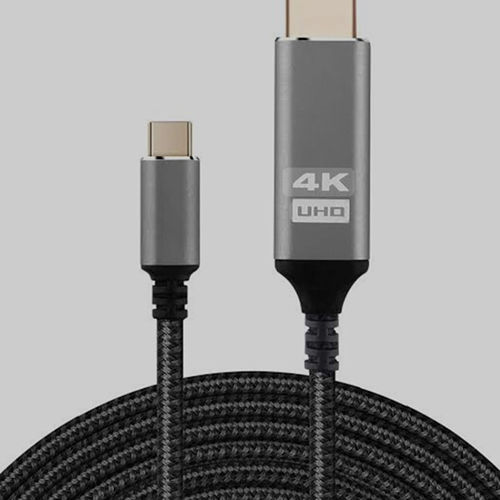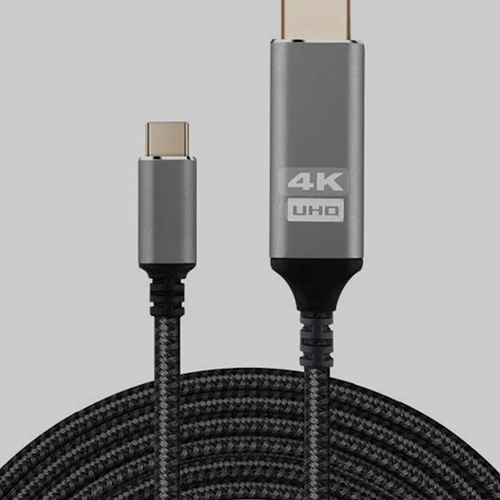Type-C to Type-C Cable Overview
Product Details:
- Product Type Type-C to Type-C Cable Overview
- Application Telecommunication
- Jacket Color Black
- Warranty 1 Year
- Click to View more
Type-C to Type-C Cable Overview Price And Quantity
- 10 Piece
Type-C to Type-C Cable Overview Product Specifications
- Type-C to Type-C Cable Overview
- Black
- Telecommunication
- 1 Year
Type-C to Type-C Cable Overview Trade Information
- 100 Piece Per Week
- 7 Days
- All India
Product Description
Introduction: A Type-C to Type-C cable, also known as USB-C to USB-C cable, is a versatile and modern cable designed to connect devices that feature USB Type-C ports. It supports data transfer, power delivery, and video output, making it an essential component for many contemporary electronic devices.
Key Features and Functions:
-
Connector Design:
- USB Type-C: Features a compact, reversible connector that can be plugged in either way, simplifying the connection process.
- Compatibility: Used for connecting devices with USB Type-C ports, such as laptops, smartphones, tablets, and accessories.
-
Data Transfer:
- Speed: Supports various data transfer rates depending on the USB specification:
- USB 2.0: Up to 480 Mbps.
- USB 3.0/3.1/3.2: Up to 5 Gbps (USB 3.0) and 20 Gbps (USB 3.2) for high-speed data transfer.
- USB4: Supports up to 40 Gbps data transfer, enabling faster performance and greater bandwidth.
- Speed: Supports various data transfer rates depending on the USB specification:
-
Power Delivery (PD):
- Charging: Capable of delivering power to charge devices, with the capability to handle power delivery up to 100 watts (20 volts, 5 amps) depending on the cable and connected devices.
- Device Compatibility: Ensures fast and efficient charging for a wide range of devices, including laptops, smartphones, and tablets.
-
Video and Audio Output:
- Alternate Mode: Supports video output through USB-C Alternate Mode (Alt Mode), allowing the cable to transmit video and audio signals. This enables connection to external monitors, projectors, and TVs.
- Resolution: Depending on the device and cable, supports resolutions up to 4K and higher.
-
Build Quality:
- Durability: Often features robust construction with reinforced connectors and cables to withstand frequent use and provide reliable performance.
- Shielding: Includes shielding to protect against interference and signal degradation, ensuring high-quality data and power transfer.
Applications:
-
Personal Devices:
- Charging and Syncing: Connects smartphones, tablets, and laptops for charging and data synchronization.
- Media Transfer: Facilitates transfer of files, photos, and videos between devices.
-
Professional Use:
- Workstations: Connects laptops to docking stations, external displays, and peripherals in office environments.
- Presentations: Enables connection of laptops to projectors and monitors for presentations and meetings.
-
Home Entertainment:
- External Displays: Connects computers or media devices to TVs or monitors, supporting high-definition video and audio output.
- Gaming: Provides a high-speed connection for gaming consoles and accessories.
Considerations for Choosing a Type-C to Type-C Cable:
-
Data Transfer Speed:
- Select a cable that supports the data transfer speed you need, such as USB 3.1 or USB4 for high-speed data transfer.
-
Power Delivery Rating:
- Ensure the cable supports the required power delivery for your devices, especially if you need to charge high-power devices like laptops.
-
Cable Length:
- Choose a length that suits your setup and needs. Longer cables can be useful for flexibility but may impact performance if not of high quality.
-
Build Quality and Durability:
- Opt for cables with durable construction and high-quality materials to ensure longevity and reliable performance.
-
Compatibility:
- Verify that the cable is compatible with your devices and supports the necessary features such as video output or high-speed data transfer.
Conclusion: A Type-C to Type-C cable is a versatile tool for connecting a wide range of modern devices, offering high-speed data transfer, efficient power delivery, and video output capabilities. By selecting the right cable based on data speed, power delivery, and build quality, you can enhance connectivity and performance for your devices.
Visuals and Diagrams:
- Connector Images: Illustrations of USB Type-C connectors and their features.
- Data Transfer Speed Chart: Comparison of different USB specifications and their data transfer rates.
- Cable Length Recommendations: Visual guide showing optimal cable lengths for various applications and setups.

Price:
- 50
- 100
- 200
- 250
- 500
- 1000+





 Send Inquiry
Send Inquiry